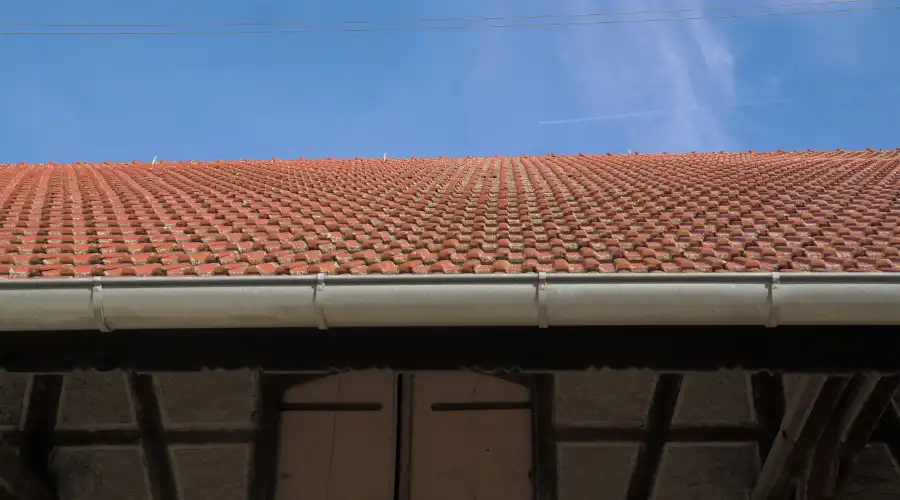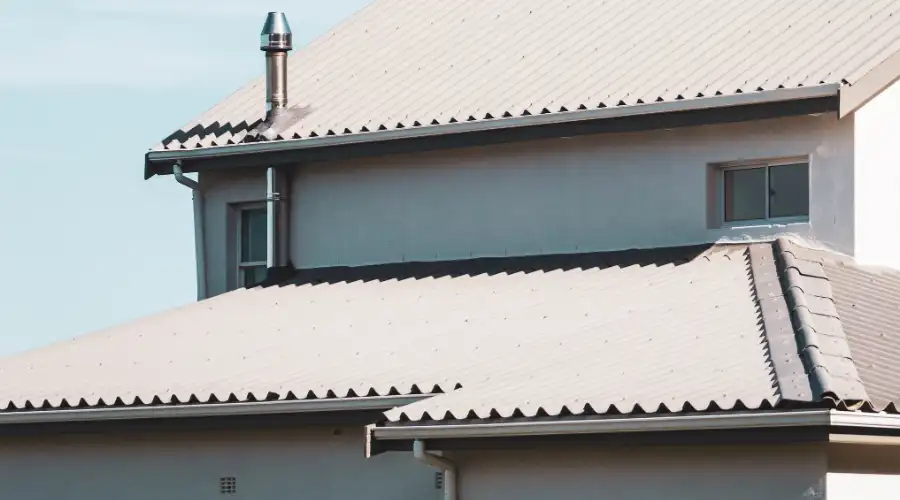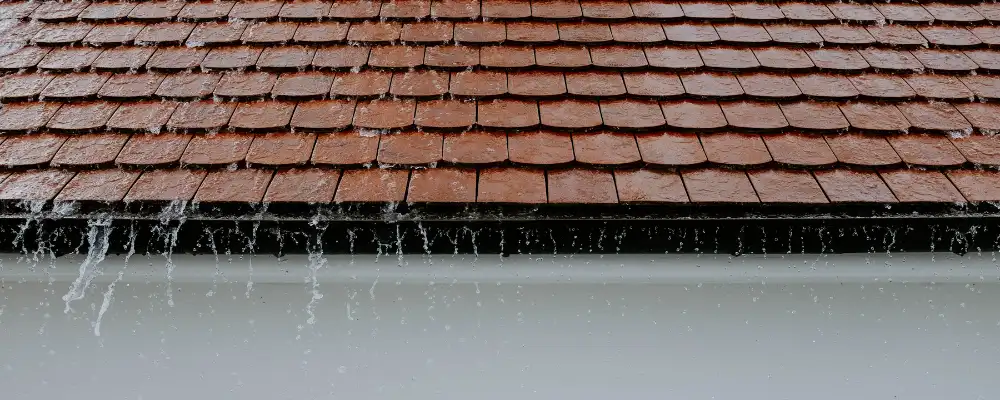Often, gutters are some of the least considered part of a building’s construction and maintenance. However, an ideal gutter system, whether it is in a home or an office building, can have a great impact on the roof’s safety and the safety of the overall area around it. This blog post is about the role played by gutters in the management of rainwater and the protection of the building. It covers gutter types, installation, and maintenance required to deliver durable protection for both roofs and walls.
What is a Gutter?

Gutters are thin, trough-like channels attached to the perimeter of roofs to catch and direct rainwater through downspouts. Gutter systems include horizontal channels, vertical downspouts, elbows, hangers, and end caps. They exist primarily to prevent water from dripping off the edges of roofs and seeping into buildings or eventually erosion of soil, damaging foundations, and leaking water into basements or lower floors. Gutter systems are now commonly integrated with rooftop rainwater harvesting and stormwater management systems.
Importance of Gutters

- Save the Building from Mould, Moss, and Mildew: Gutters serve as the channels to guide rainwater from the roof and walls, thus keeping the area completely dry, leaving no chance for mold, moss, and mildew to grow. Thus, no water from the gutters is reaching the ground floor of your structure, and the possibility of mold growing is low.
- Eliminate the Risk of Water Damage: Rain hitting the walls can cause the paint to peel off, which serves as a starting point for leaks, seepage and structural damage to the walls. Gutters prevent this.
- Minimise Insect Invasion: Gutters that drain the water away efficiently prevent the stagnation of water, which becomes a breeding place for insects such as mosquitoes and rodents. The breeding of these insects have to be controlled as they are likely to destroy the garden, eat into the wood, and bite animals or even humans.
- Protects Open Spaces: The gutter is like a channel that takes the water away from yards and other open spaces, preventing erosion. In this way, the nutrients in the soil are preserved, and the space is also safe for food cultivation.
- Prevents Structural Damage: The water that descends through downspouts can erode the soil around the structure, resulting in rather severe damage to the foundation. This dangerous consequence is prevented by using gutters.
- Make the House Look More Attractive: Well-fitted and maintained channels create a more beautiful look for your house. With many shapes and shades, gutters are also used for the sake of visual improvement and can lead to an increase in property prices.
Components of Gutters
- Gutter Section: Gutter sections are a part of the gutter system that are placed horizontally. Made of materials like vinyl, copper, or aluminum, the gutter section directs rainwater away from the roof.
- Downspout: This is a vertical pipe that is typically cylinder-shaped or rectangular and carries water from the gutter to the ground.
- Hangers: Hangers hold the gutters in place and fasten them to the roof. There are several kinds, like standard, heavy-duty, and K-style.
- Gutter Guards: These ensure a smooth water flow by keeping debris away from the gutters and are generally made of metals like stainless steel.
- Downspout Extension: It is continuation of the downspout and enables water to be drained at a safe location away from the foundation.
- End Caps: End caps are used for sealing the ends of gutters that are open. They prevent water from flowing out, and at the same time, they make sure the water is being directed properly.
- Miters: They connect gutter sections at corners and support the joint both at the inside and outside angles.
- Elbows: Elbows are the bent parts of the pipe from where water is taken out from downspouts, and they run along the sides of the house.
- Pipe Cleats: They are metal brackets that hold downspouts securely on the exterior walls of your home.
- Gutter Spikes and Ferrules: Large nails (spikes) and small metal cylinders (ferrules) that attach the gutters to the roof’s fascia board.
- Hangers: Modern systems use hangers, which include brackets and clips to secure the gutters more efficiently than spikes.
Types of Gutters
In residential and commercial construction, the most popularly used types of gutters include,
1. Half-Round Gutters
Half-round gutters are shaped like the letter U with smooth and curved sides and are often selected because of their timeless charm, especially in older or historical houses. Such a pattern is generally made of copper or aluminum.
Pros: Beautiful, perfect for classic and historic houses, the interior is less likely to be clogged with debris due to the smooth surface.
Cons: More expensive to install, can get more easily damaged (compared to other types), and can be less efficient in handling high water volumes.
2. K-Style Gutters
K-style gutters are designed with a rectangular shape; the name comes from their similarity to crown molding profiles. They are the most popular gutter types for contemporary homes.
Pros: They are long-lasting, have more capacity, and are very easy to put in place. They are available in various materials and can be polished well with different finishes.
Cons: Inner angles collect debris and dust, requiring more maintenance; they may suffer from corrosion over time.
3. Seamless Gutters
These flat gutters are produced with a single homogeneous material that has no joints in between, offering a continuous and seamless style. These gutters are professionally installed and are manufactured to fit the exact dimensions of your roof.
Pros: Minimal leak potential, low upkeep, aesthetically pleasing, and very sturdy.
Cons: High-priced and needs professionals for installation, and also the fixing procedure is complicated.
4. Box Gutters
Box gutters are larger and are typically installed in commercial buildings or homes with large roof areas, designed to handle significant water volumes. They are generally tucked in below the edge of the roof and installed during roof construction.
Pros: Ideal for large roofs, can handle heavy rainfall efficiently.
Cons: Expensive, often requires professional installation, and not as visually appealing.
Gutter Materials and Their Benefits
The main materials available and used for gutters are
- Aluminium: This is lightweight, rust-proof, and relatively cheap. Preparation and installation of aluminium gutters is relatively straightforward and suitable for most climates, including coastal areas.
- PVC (Vinyl): It is cheap, easy to maintain and designed for low-budget residential projects. However, vinyl can crack or warp under heavy UV or temperature exposure.
- Galvanised Steel: Compared to aluminium, it is heavier, sturdier and has a zinc coating to prevent rust formation. Galvanised steel is generally considered to be superior to aluminium when installed in areas prone to heavy rain, as it has better corrosion resistance.
- Copper: It is extremely durable and resistant to corrosion. With age, copper will develop a patina that gives it an aesthetic finish. It is best suited for heritage structures or premium installations.
- Zinc: Zinc is highly durable and maintenance-free. It has aesthetic merit and is very resistant to weathering. However, it is comparatively more expensive in terms of both material and installation cost.
Each material has trade-offs related to weight, durability, complexity of installation, and overall usefulness.
Gutter Installation Process
An accurate installation procedure is very important for proper water drainage systems at homes and longevity of your system. The normal process consists of,
- Planning & Measurement: Estimating the slope of the roof and the drainage area of the surface to calculate the capacity and slope of the gutters (generally 1/4 inches per 10 feet).
- Bracket Installation: Hanger brackets must be spaced level to support the gutter and maintain level with the existing roof line, typically no more than 3 feet apart.
- Gutter Fixing: Once the gutter sections are positioned properly, they can be attached to the fascias with screws or brackets, and must slope towards the downspouts.
- Downspout Positioning: The best locations for downspouts are corners or areas with a low flow. A minimum of one outlet for every 40 feet of gutter is necessary. It should have either splash blocks or drainage pipes to direct the water away from the foundation of the house.
- Sealing & Testing: All the sealed joints should be sealed with a waterproof caulk or with the use of rubber gaskets, and everything should be inspected to confirm the water is flowing properly.
How to Maintain my Gutter System?
- Scheduled Cleanings: Try to clean all the leaves, twigs, and trash at least twice a year, and even more often if you have a lot of different kinds of trees near your home. Pay special attention to cleaning before and after the monsoon season or an extreme weather event.
- Check for Clogs: Be on the lookout for spots that might have a build-up of dirt, such as the place around the downspout, so that there is no overflow. If the gutters are blocked, water that is trapped will find its way into the walls and under the roof, and as a result, the house will be damaged and electrical appliances may malfunction.
- Inspect for Damage: Check to make sure there are no signs of rust, the gutter is not sagging, the hangers are tight, and your gutter is not separated from your fascia board.
- Gutter guards: The installation of mesh and hood-type and/or other debris-movement systems reduces the amount of debris that may accumulate over time and limits maintenance visits.
- Professional Inspection: An annual roof inspection done by a professional can make a huge difference in the identification of both minor and major problems that can happen anytime, but especially after a period of extreme weather or heavy winds.
How to Select the Best Gutter for Your Project?
When selecting a gutter system, several considerations vary from project to project,
- Weather Conditions: For rain-prone regions, you will want to use larger capacity gutter systems such as box gutters, seamless gutters, K-style gutters, and materials such as copper or zinc.
- Type of Building: A fascia gutter may fit perfectly in modern buildings, while a half-round gutter may be more ideal for classical or heritage-style architecture.
- Cost: The use of PVC for gutters would work well for low-budget homes, while using aluminium would provide a good balance of cost versus performance.
- Roof Size and Slope: Larger roofs tend to have more runoff and therefore require larger gutters with more downspouts to handle runoff effectively.
- Local codes: When you are providing gutters, you need to comply with local codes for drainage as well. This is particularly important in urban contexts where flooding is an issue, especially in cities with stormwater management regulations.
If you can include a civil engineer or a drain specialist early on in construction, it would be beneficial for choosing/ designing the right size and placement of gutters.
Conclusion
Gutters are one of the essential parts of any house/building’s drainage system. They are not only beautiful accessories, but also some of the most valuable elements that save the property from water-related issues. Your gutter system, when properly chosen, professionally installed, and maintained, can provide you with complete protection against damage to the foundation, building exterior, and the landscape. By opting for a high-quality gutter system, you are not only installing a protective shield for your investment but also doubling the life, safety, and value of your residential or commercial property.

